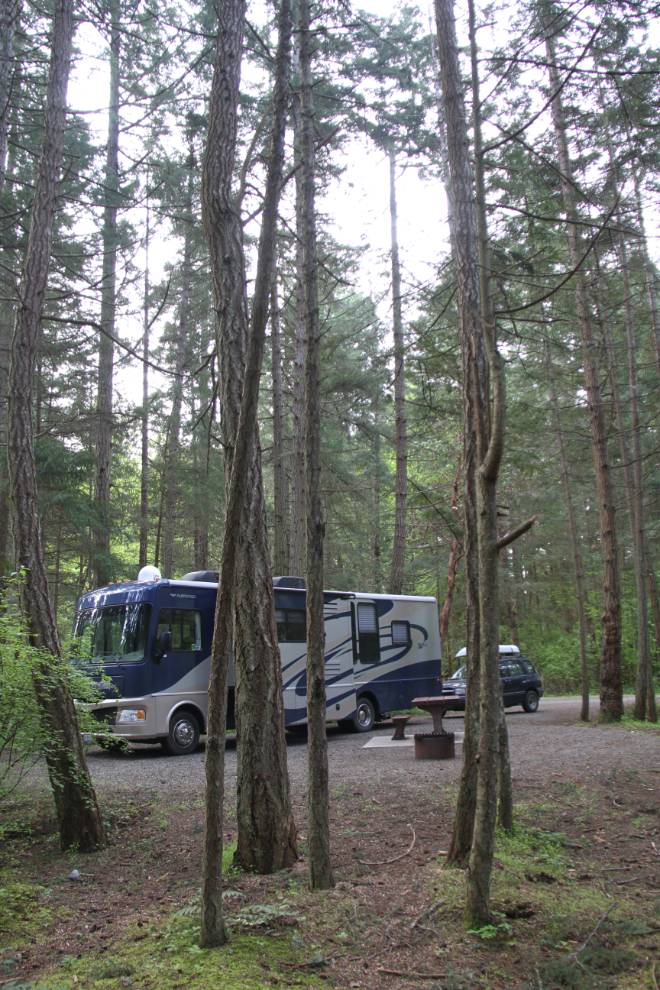A visit to the British Columbia Aviation Museum, Sidney
On Day 13, May 8th, we started a 2-day drive towards Tofino. I really wanted to see the British Columbia Aviation Museum but it just hadn’t fit into the schedule yet. A last-second decision made it a stop before leaving the Victoria area, though, and I’m extremely glad that we made that decision. The museum is excellent, and this post contains a lot of photos from it (32 of them).
The museum is located at the Victoria International Airport. When I saw the museum approach, I decided to leave the motorhome on the wide shoulder of the main road. It was a good decision – the parking lot is not big-rig-friendly.
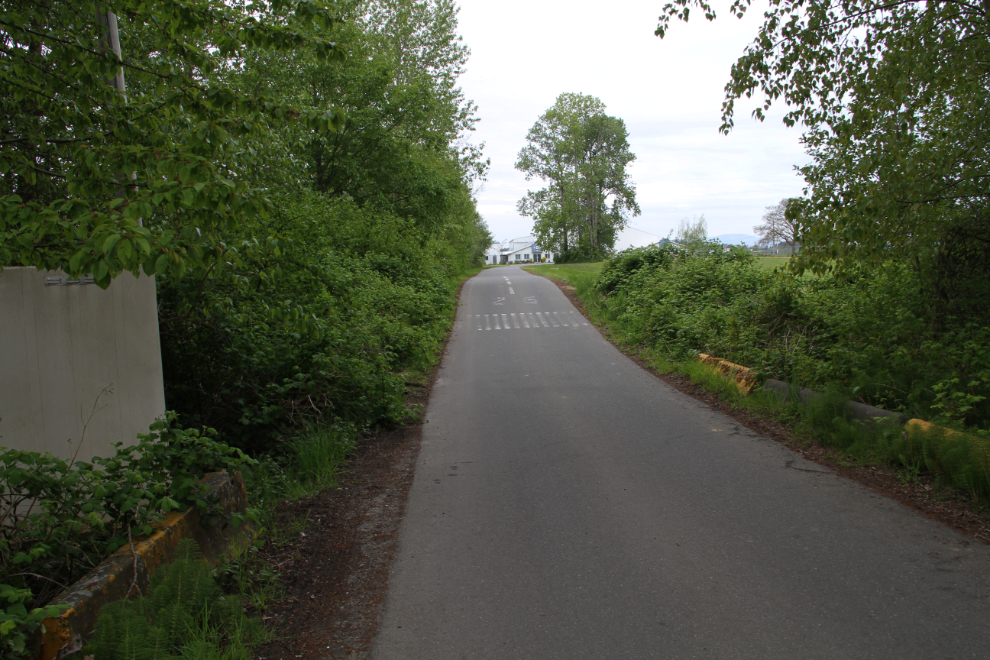
The airport began life as RCAF base Patricia Bay, always known as “Pat Bay.” A brass plaque at the base of the flagpoles states: “A Place of Ceremony. This plaque was unveiled on October 22, 1999 by His Honour the Honourable Garde B. Gardom, Q.C., Lieutenant Governor of British Columbia, marking the 60th anniversary of the airport’s opening as the Patricia Bay Air Station, Royal Canadian Air Force. The first aeroplane to land was an RCAF Avro 626 biplane. This occurred on October 22, 1939, after which the RCAF ensign was raised. On this same date in 1999, a re-enactment took place when an ex-RCAF de Havilland Tiger Moth DH-82C biplane flew in bearing an Air Force ensign that now flies on this flag staff in commemoration of the original event 60 years before.”
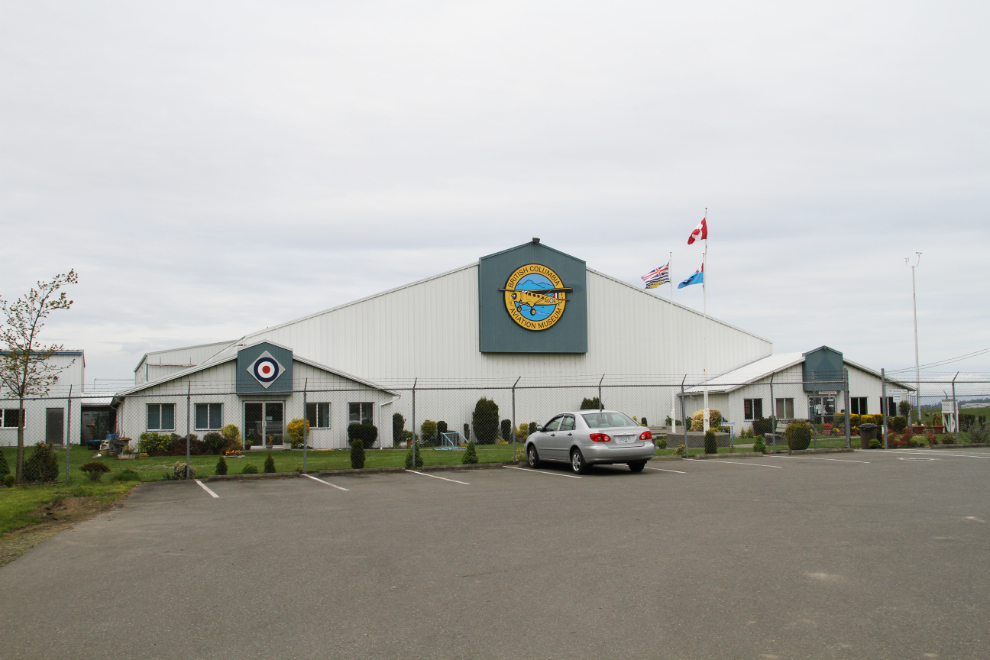
There were several people in the reception area inside the museum, but they turned out to be all volunteers – we were the only visitors. We paid our admission ($10 for Cathy and $8 for me), and one of the volunteers, Lyle, offered to take us on a tour. He started by asking about our aviation experience, and how much information we wanted. We said that we wanted the highlights and then would wander on our own. It soon became clear that he could have talked about aviation, and the museum collection, for days 🙂
We began the tour with the full-sized replica of a 1910 Gibson Twin-plane hanging above us in the main hall. On September 8, 1910, at Dean’s Farm near Victoria, W. W. Gibson and his Gibson Twin-plane achieved the first flight in Canada of a Canadian designed and built heavier-than-air aircraft. On that day, it flew 25 feet. On September 24th, it flew about 200 feet but a gust of cross-wind while landing caused it to crash into a tree. Mr. Gibson not only designed and built the aircraft, but its engine as well. The Twin-plane never flew again, but its successor, the Gibson Multi-plane, used the Twin-plan’s engine for flights of up to a mile in 1911.
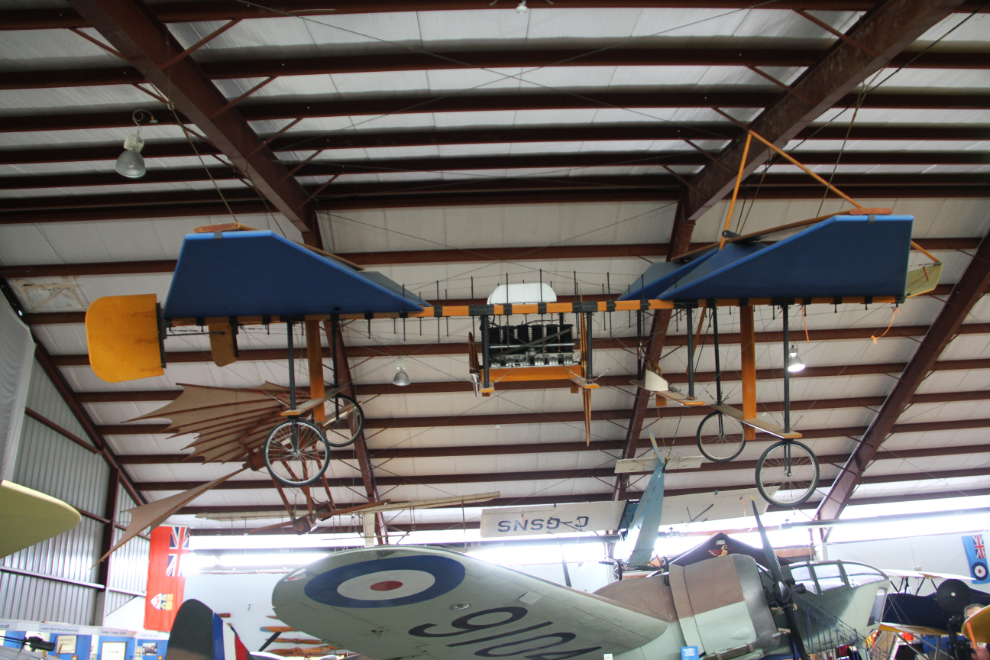
Above the Bolingbroke bomber hangs a full-sized replica of daVinci’s airplane.
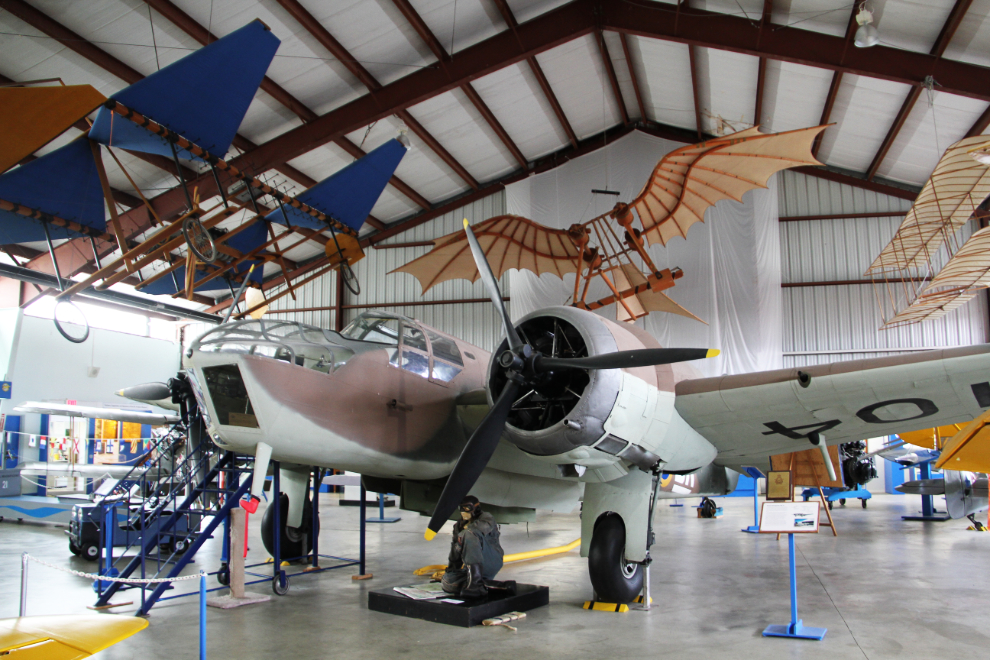
The museum’s collection is remarkable, not only because of its size, but also its scope, from real and replica aircraft to air traffic control equipment, papers, uniforms, and ephemera. The museum gets no core funding, and has no paid employees. Because of the lack of paid staff, they are not officially recognized as a museum.
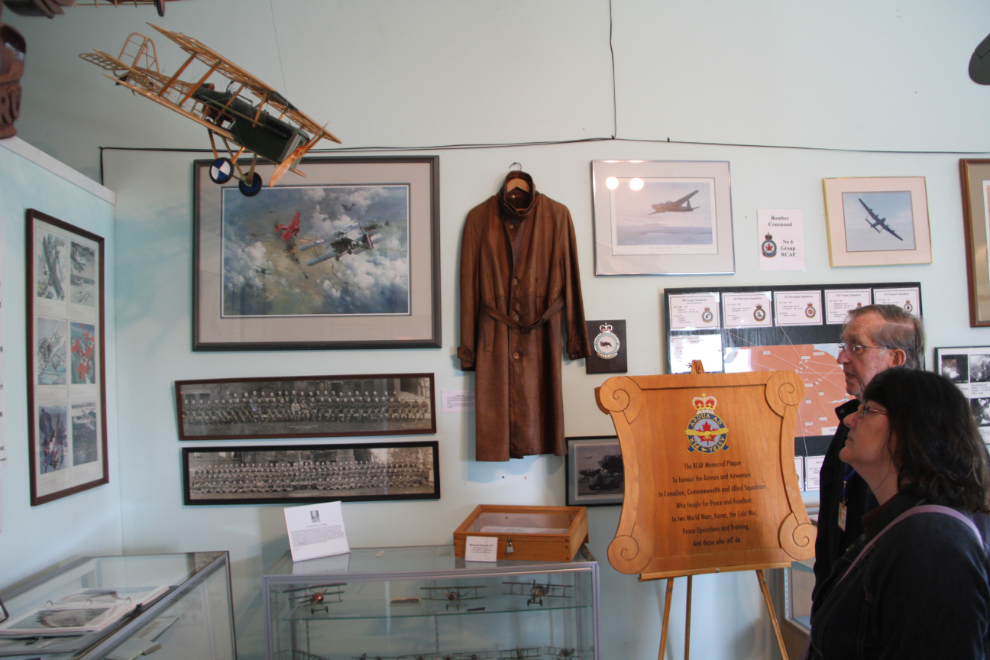
There is a great deal of aviation art on the walls. This painting of an Avro Arrow was done in 1993 by H. Hipperson.
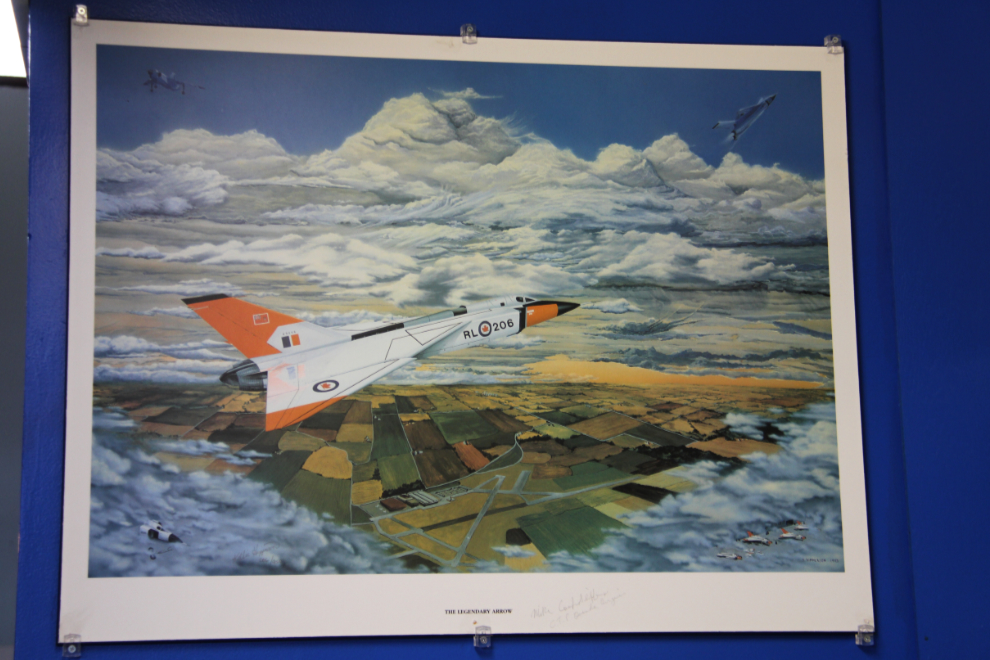
The first airplane I fell in love with as a kid was the Vickers Viscount. Depending on the winds, our home in Surrey was sometime son the flight path of aircraft landing at and departing Vancouver, and by the time I was about 7 I knew a Viscount was coming by its sound. CF-THG has been beautifully restored.

The interior of the Vickers Viscount – flying at its finest in the 1950s. Individual donors paid $300 for the re-upholstery of each seat during the restoration, and are recognized.

The Beechcraft 18 first flew in 1937, and some are still flying commercially today (if the weather had cooperated, I would have flown in one yesterday). This example was highly modified by the BC Government in the mid-19060s and is now known as a Westwind IV. A pair of Pratt & Whitney PT-6 turboprops replaced the radial engines, tricycle landing gear was installed, and a single-piece swept fin and rudder replaced the twin tail.

Outside the back hangar is an RCAF crash truck, built by Welles-Thornton on a Ford chassis of about 1939 vintage.
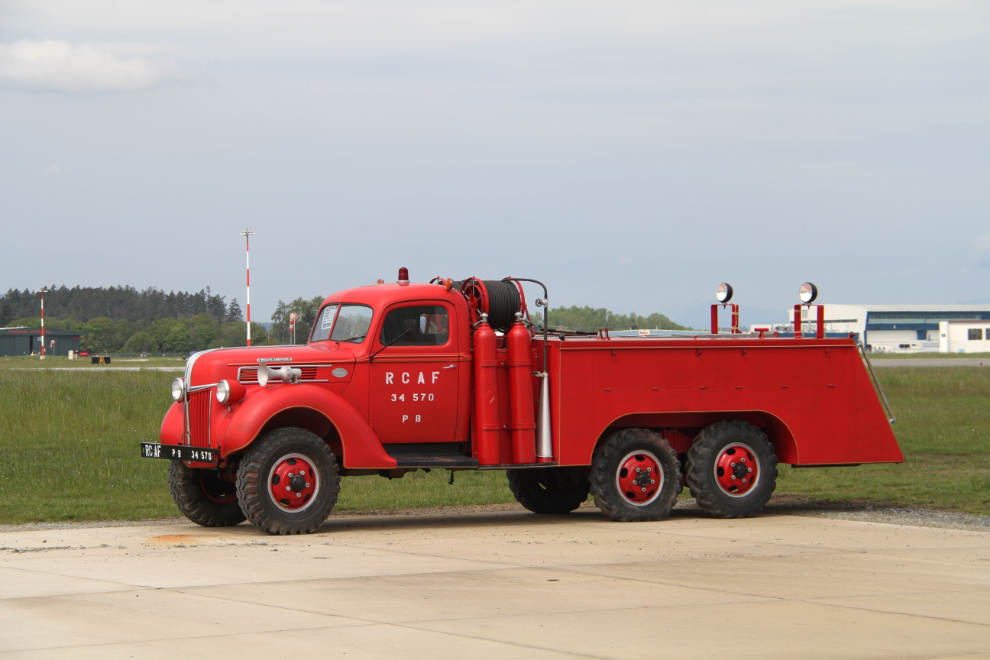
I got to try out the front seat of a Canadair Shooting Star. This is a licenced version of the Lockheed T-33, which was a two-seat trainer version of the P-80 Shooting Star.

In the large workshop, work has begun on building a replica of the first aircraft designed, built, and flown in British Columbia, the Hoffar H-1. It was also the first aircraft to fly a passenger over Vancouver, but in late 1917 it hit a snag and was destroyed. Two scale models and the full-size Hoffar are being built from the details gleaned from 3 photos of the aircraft.
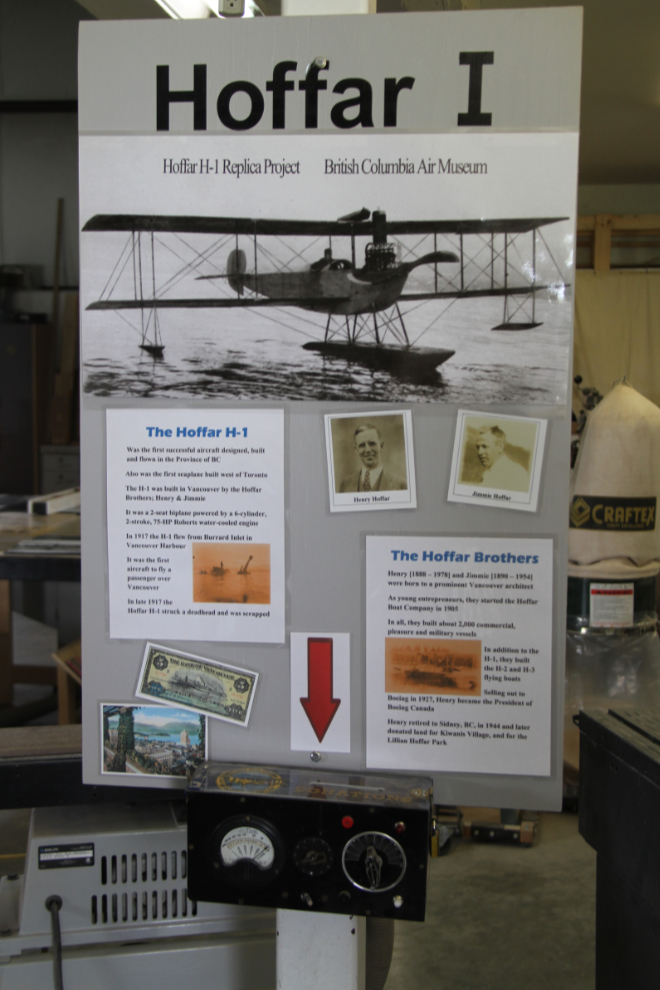
Some mild restoration work is being done on a modified Republic RC-3 Seabee called a Trident TR1 Trigull 320. It was built by Trident Aircraft of Burnaby, and later Sidney. The Trigull’s first flight was in August 1973, but in 1980 the company ran out of money and closed. Viking Air of Sidney owns this and another prototype, and holds the type certificate.
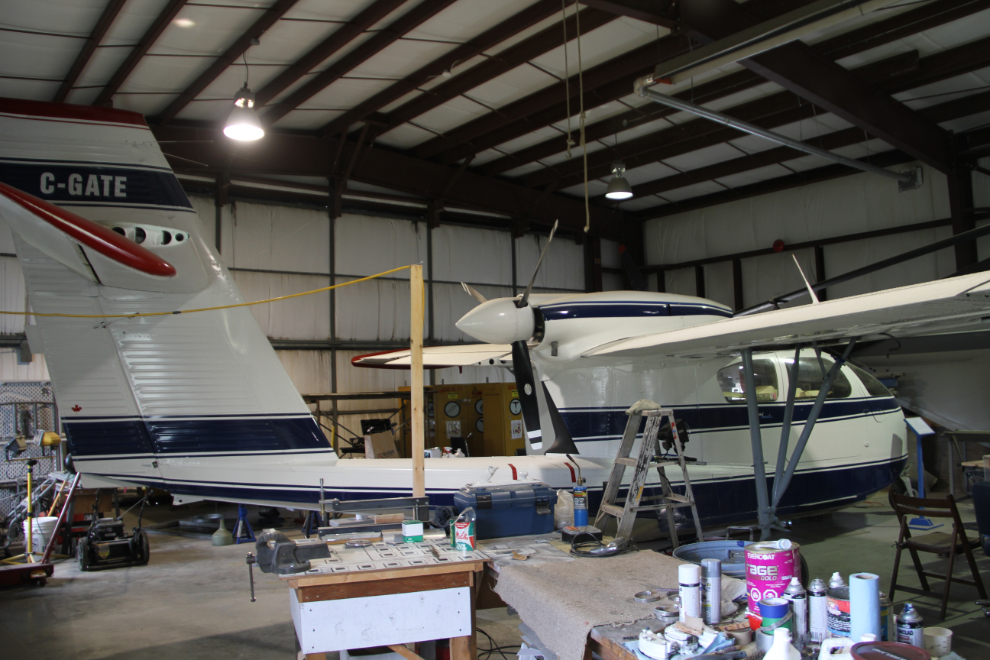
This room is rented out for all sorts of meetings and events, and is an important part of fund-raising.
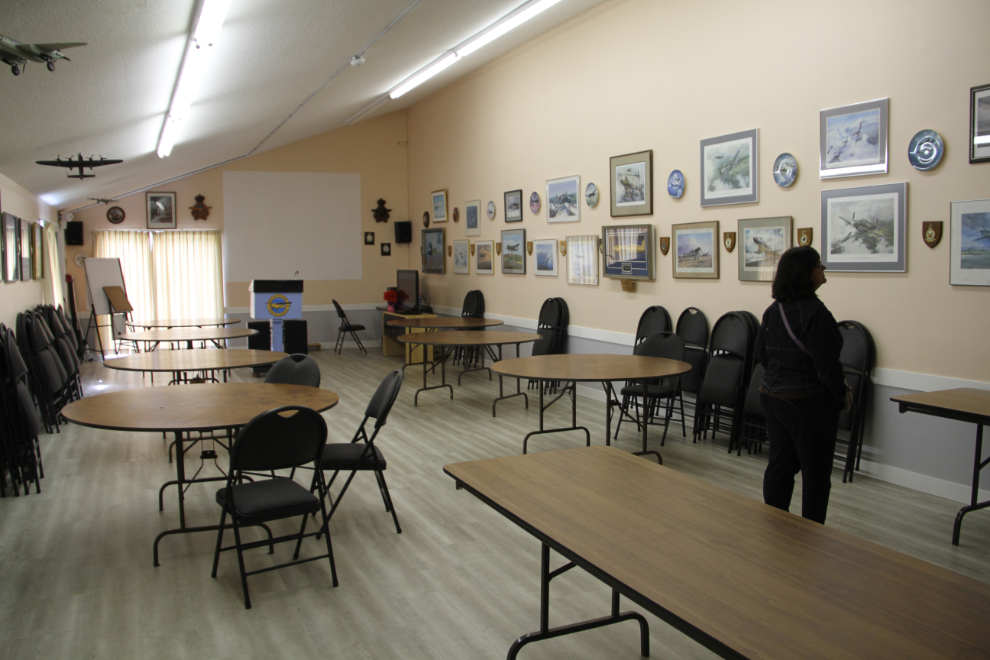
An aircraft that has a special attraction for me because its history is strongly attached to Atlin, BC, is the Eastman Sea Rover.
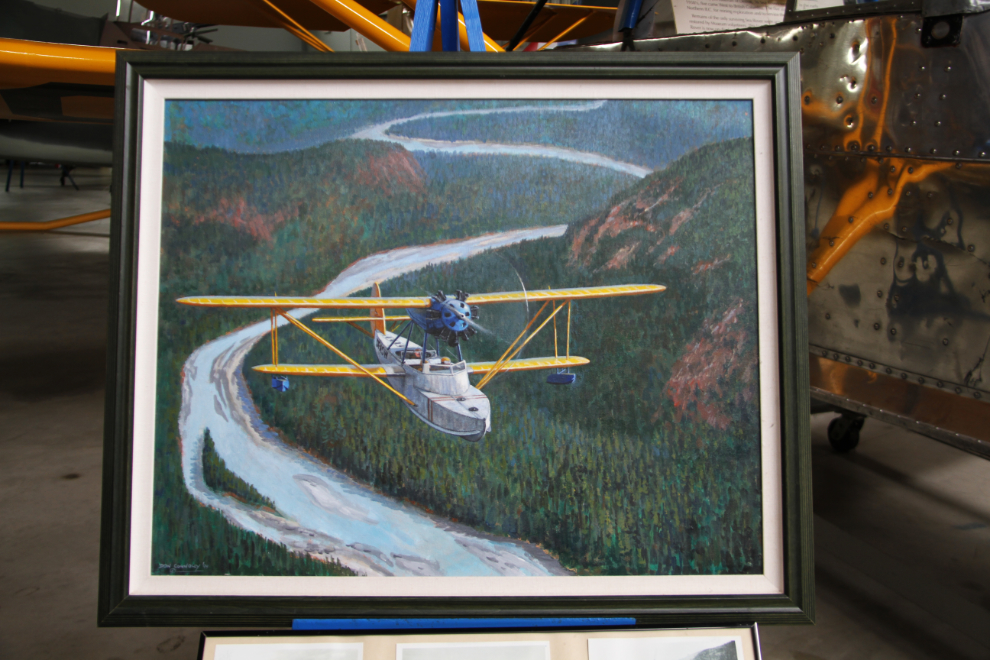
This is the only remaining example of the aircraft, five of which were flown to Atlin in 1929.


The versatile Douglas A26 Invader served in combat roles in the latter part of World War II, in Korea, and in Vietnam, but by the 1960s was also being modified for use as a water bomber to combat forest fires. The BCAM’s A26 served with Conair from 1970 until 1984.
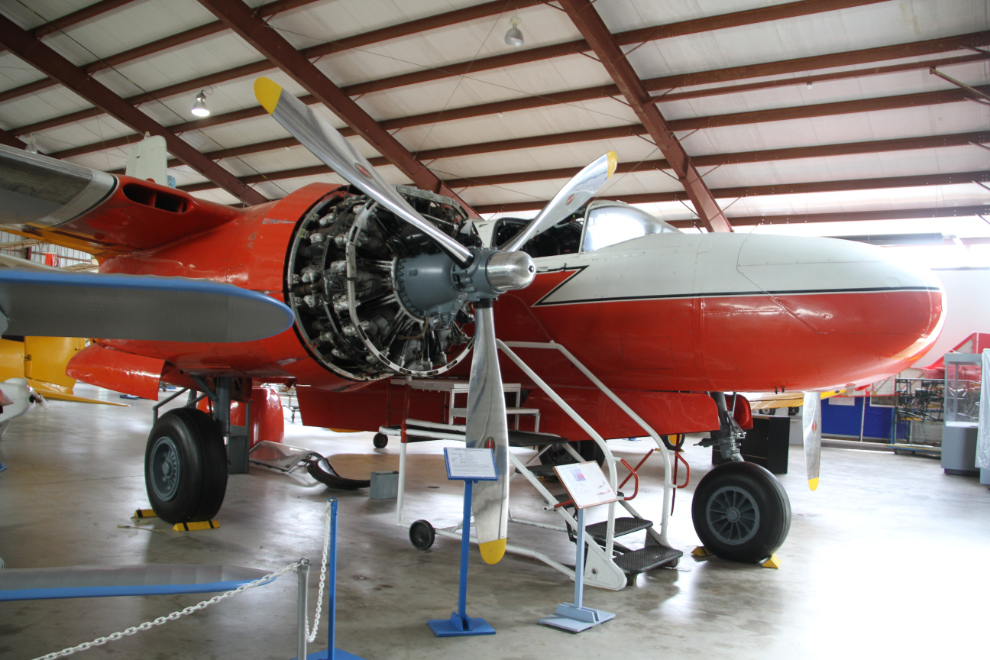
This Avro Anson Mark II was obtained from the Royal Canadian Legion in Fort St. John, BC, and has been restored to represent a Pat Bay training aircraft.
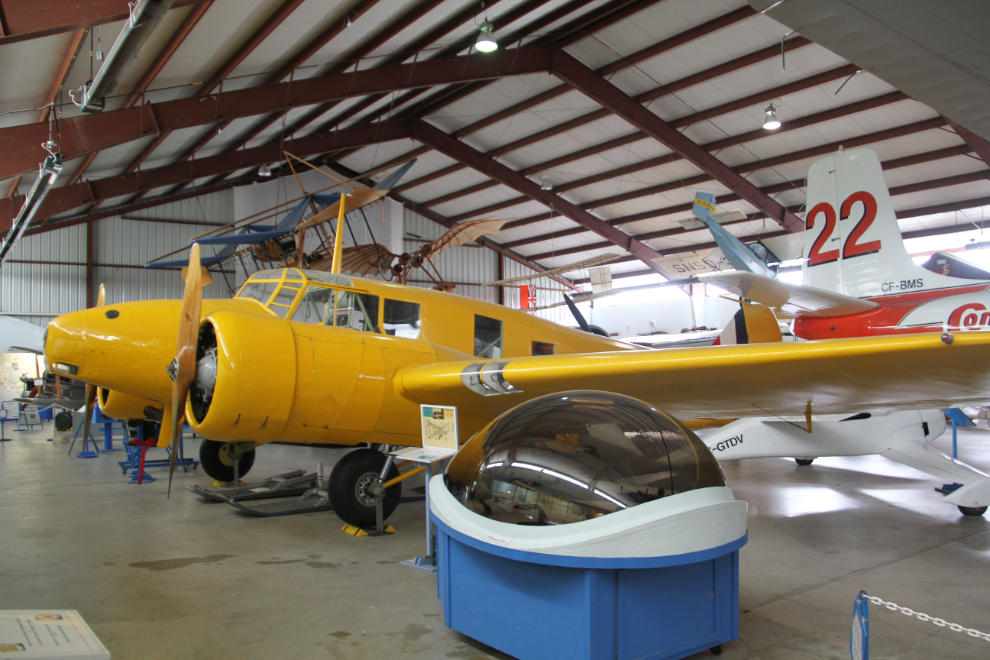
This early Department of Transport Aeradio Station is complete right down to the weather station that sat outside.
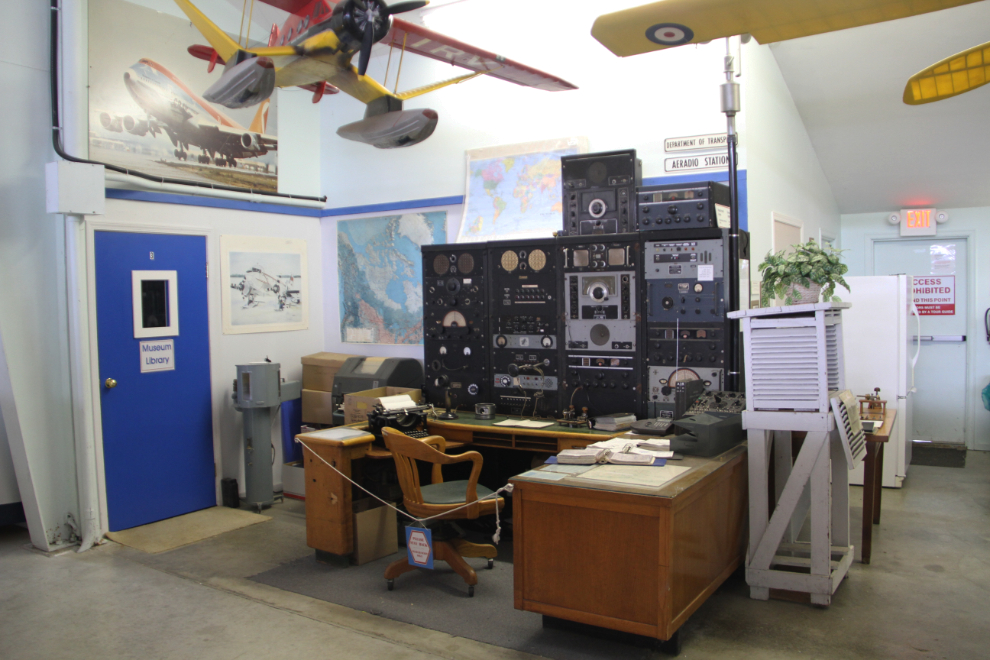
This display describes early air mail flights on the west coast, and features many of the special envelopes carried on the first flights on a specific route. I have many of the envelopes (“covers”) in my collection.
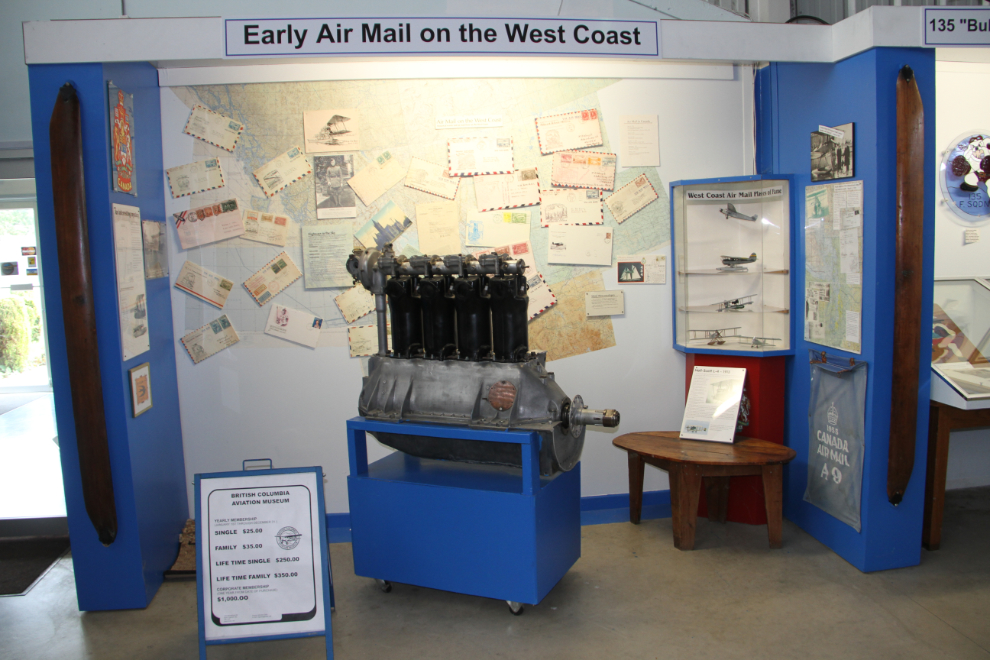
The French Nieuport 17 is one of the best-known of World War I fighters, due to its success. This is a 7/8 scale replica built by Jack Blair.
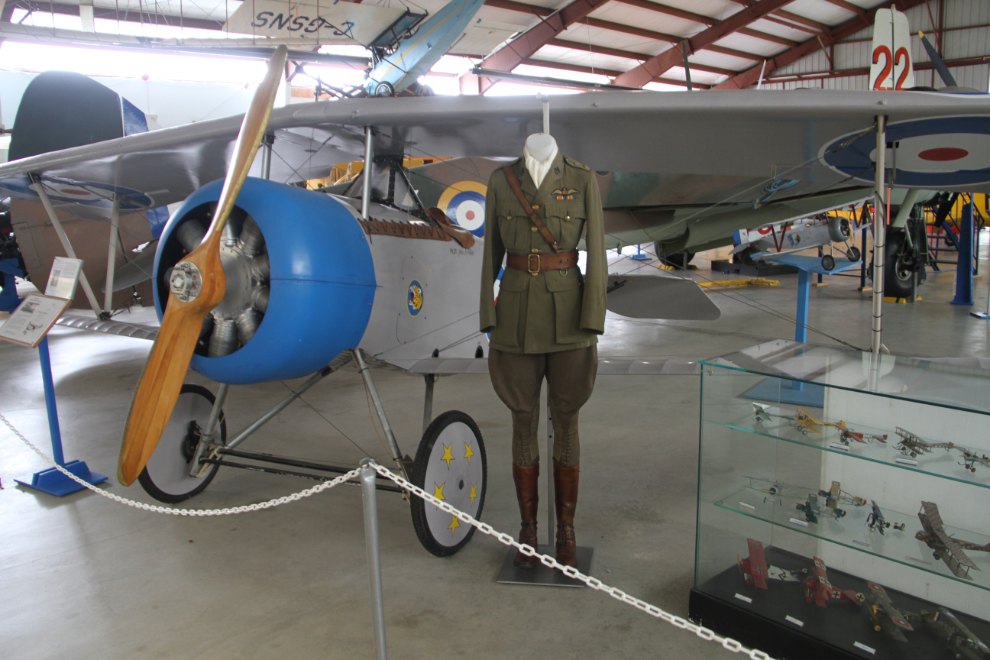
A model of the incredible Supermarine S-6B, designed by R.J. Mitchell to take part in the 1931 Schneider Trophy competition. It set a new speed record, 528.8 km/h (340.08 mph).
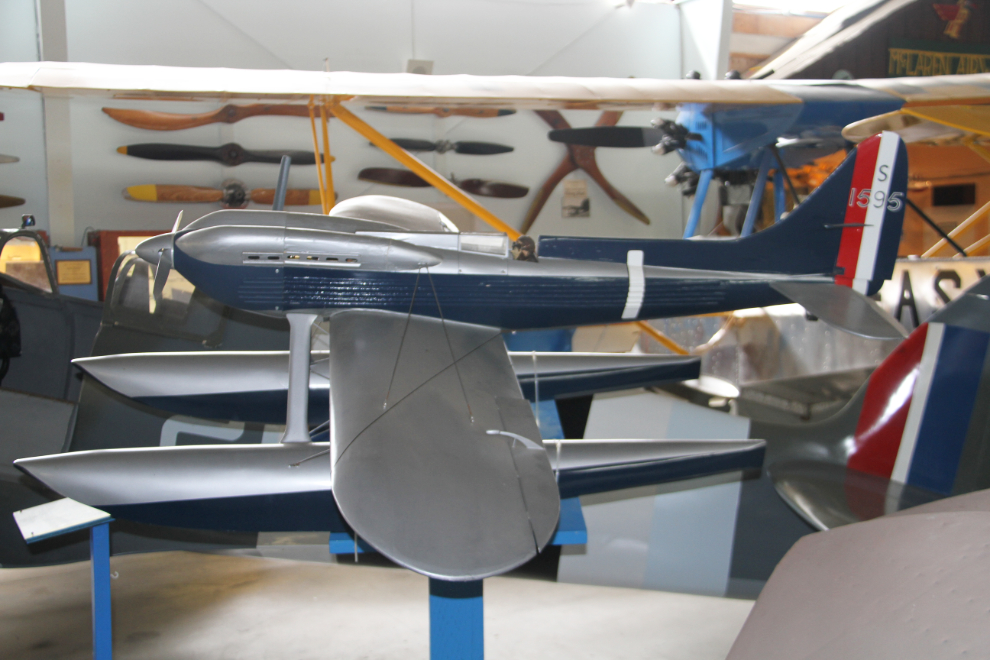
The museum’s Fleet was built in 1930 and worked in northern BC for nearly 50 years. It was the oldest registered aircraft in Canada when it was retired in 1981.
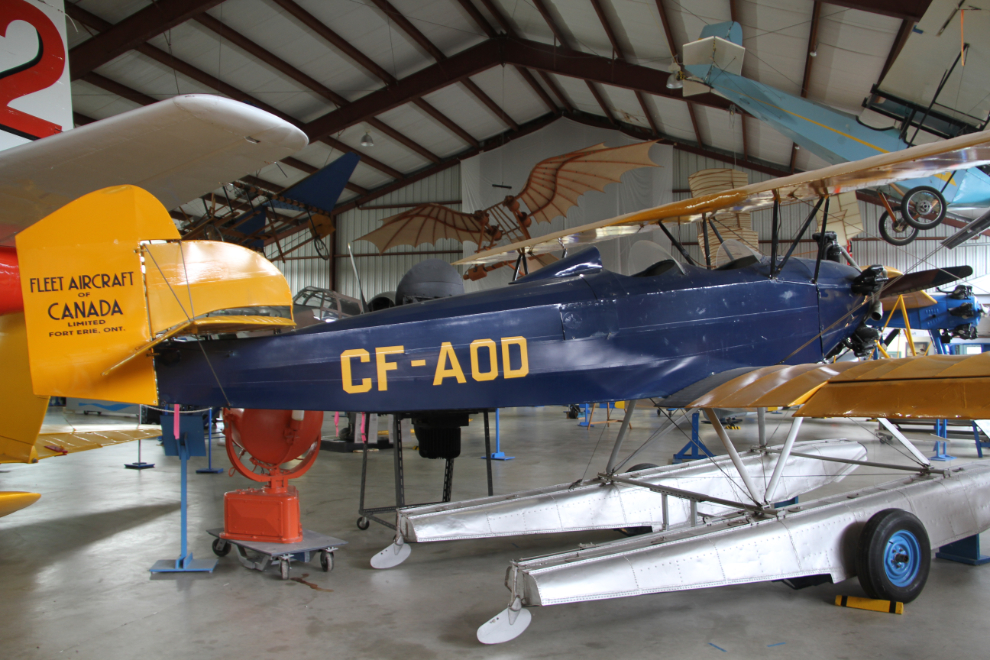
Designed by North American Aviation, the Harvard became the main trainer used by the British Commonwealth Air Training Plan. This example was built from a wreck, and includes parts from a Mark II, a Mark 4 and an AT-6 Texan.
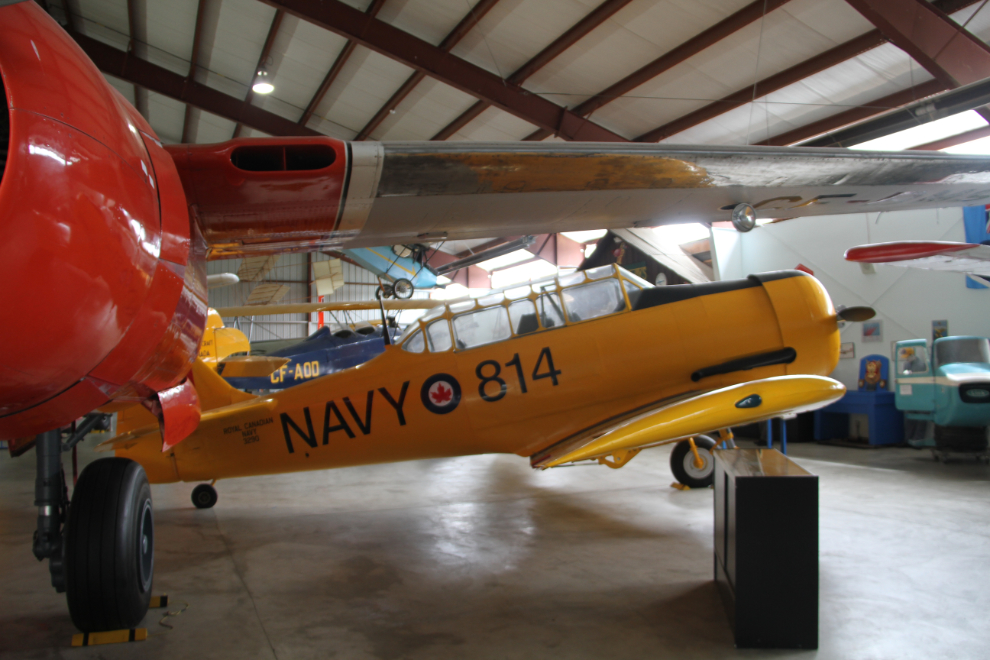
While I went around the museum getting some more photos, Cathy was joined at the Snowbirds display by Captain (Retired) David “Badger” Berger-North, who designed the Snowbirds logo in 1972, the year they began performing. Badger was an instructor at Canadian Forces Flying Training School in Moose Jaw at the time, and is now a BCAM volunteer.
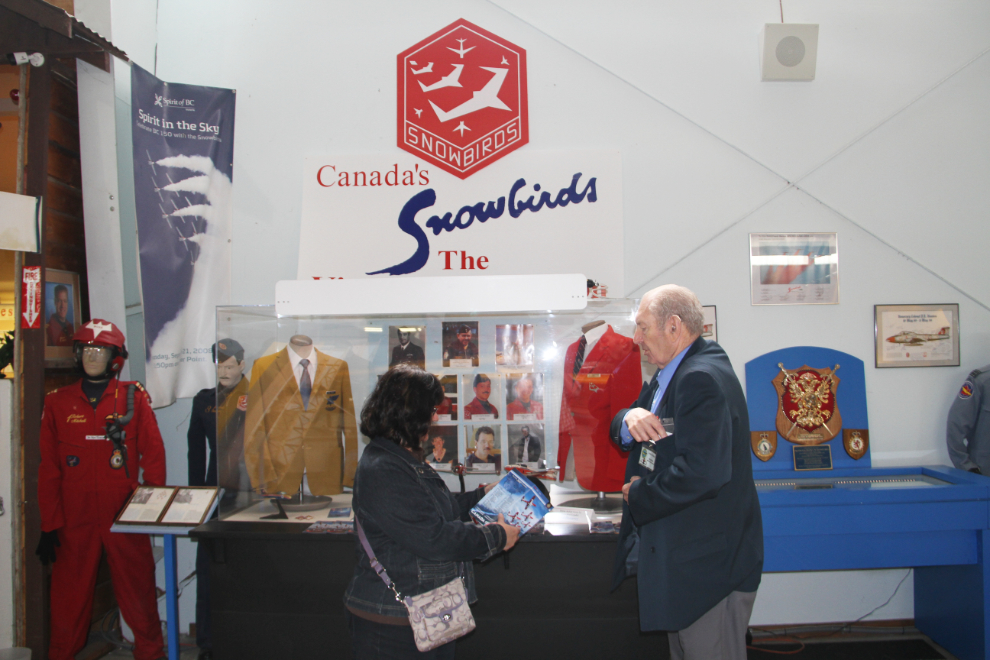
A unique Japanese weapon that could have had devastating effects was the Fu-Go balloon. This little hydrogen balloon climbed to 30,000 feet after launch in Japan, and in 3 days would be over western North America where it dropped four 5-kg incendiary bombs and one 15-kg anti-personnel bomb. A flash charge then destroyed the paper balloon to hide evidence of the bombs’ origin. Of the 9,300 Fu-Go balloons launched, about 10% reached North America. One adult and 5 children were killed by a Fu-Go bomb in Oregon in May 1945, but no other damage was caused. Unfortunately for the Japanese, they chose to launch them in the winter – between November 1944 and April 1945. Summer launches could have caused massive forest fires. This original Fu-Go bomb basket is the finest example known to exist in the world.
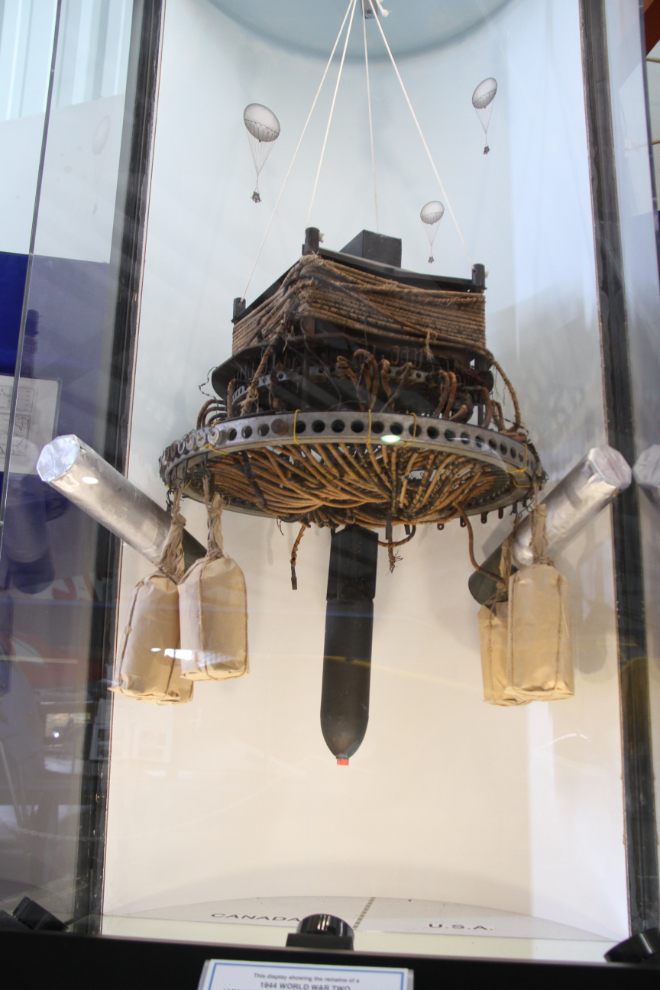
Both guides at the museum had recommended that we go across the street to Mary’s Bleue Moon Cafe for lunch. It opened in 1939 to serve Pat Bay, and the food, service, and decor are all excellent.
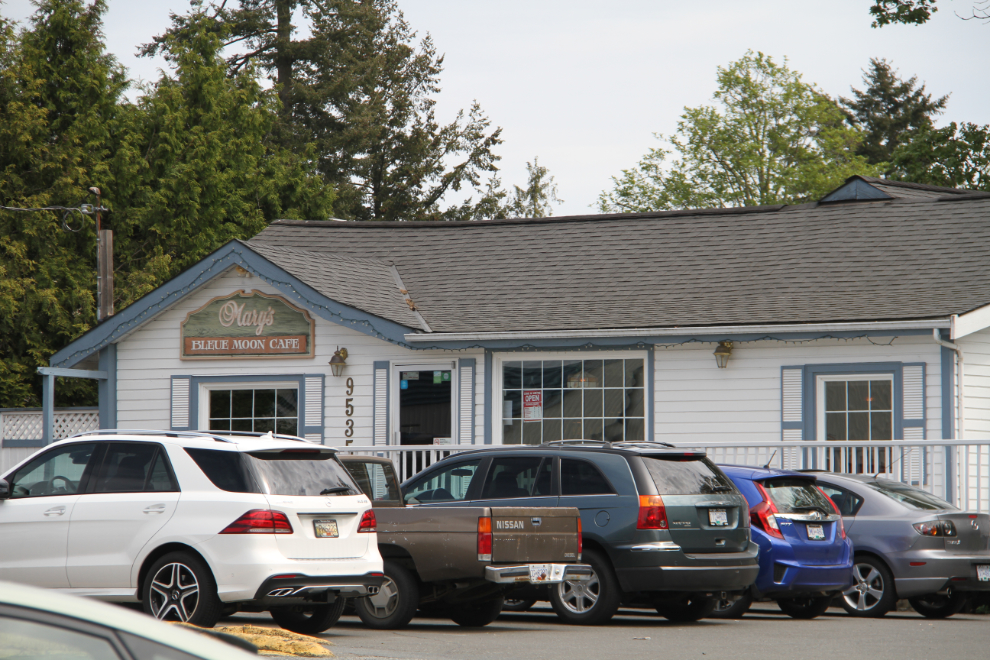
Before leaving the big city, we went to the Sidney hospital to have Cathy’s hand checked out. She fell on the walk up from Sandcut Beach, and it had really been bothering her. An x-ray didn’t show any break, and with that concern alleviated, we started towards the west coast at 3:45.

Traffic on the infamous Malahat Highway wasn’t bad, and we made it up-Island in good time. We did a big grocery shopping in Nanaimo, and made dinner in the store parking lot.

I had planned on overnighting at Sproat Lake Provincial Park, but when I saw the sign pointing to a campground at Rathtrevor Beach Provincial Park as daylight dimmed, we decided that was far enough. The price for an unserviced site, though, is quite shocking – $35. We had actually pulled into the Walmart at Nanaimo, but it was signed “No Overnight Parking”, so continued on.
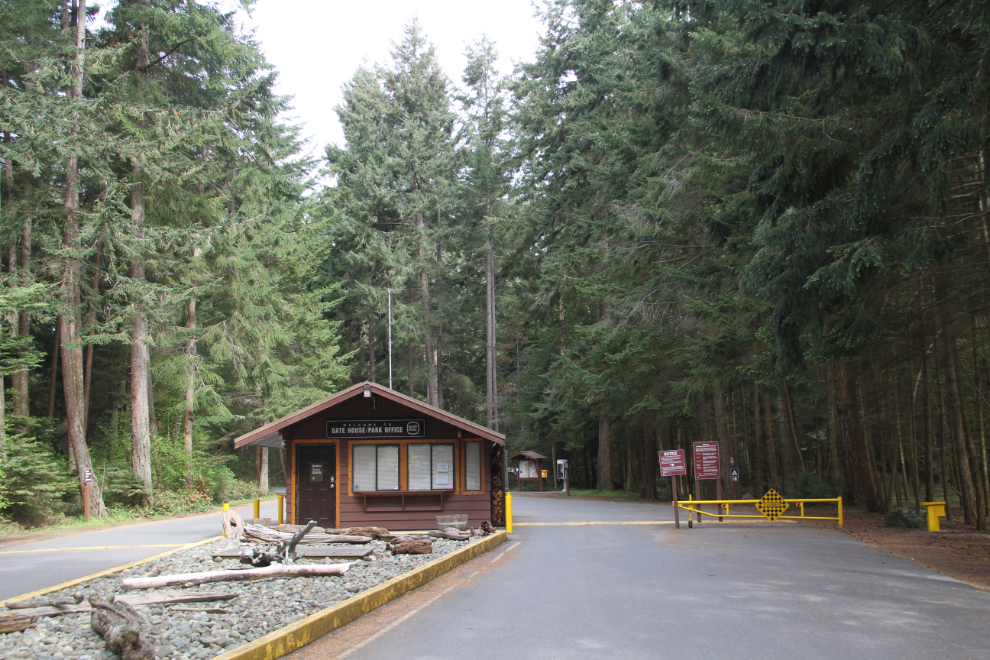
The forest at Rathtrevor is spectacular. We had a brief look at the no-dogs-allowed beach, then went to bed. We’d see more of the park in the morning before driving to Pacific Rim National Park.
